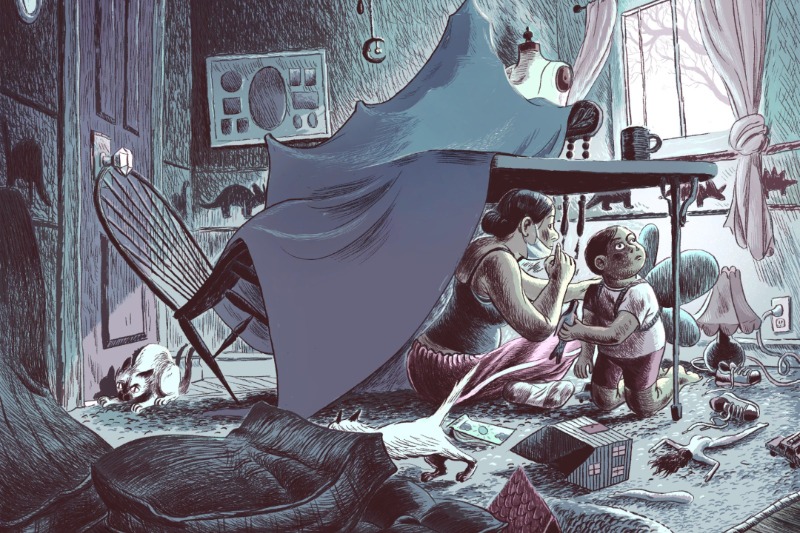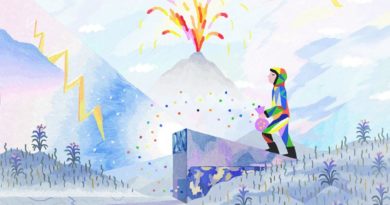Finding metaphors for personal narratives: Wesley Allsbrook
We had a chat with California based writer-illustrator Wesley Allsbrook on both her recent digital artworks and the creativity behind her comics. Allsbrook shared the impact of her personal life story on her creation process, uncensored, and laid out a realistic and eye-opening approach on being a freelancer artist who works with big technology companies. We are hoping that the criticism Allsbrook directs towards racism and sexism issues that US is trying to solve through positive discrimination reflects on art and technology practices elsewhere.
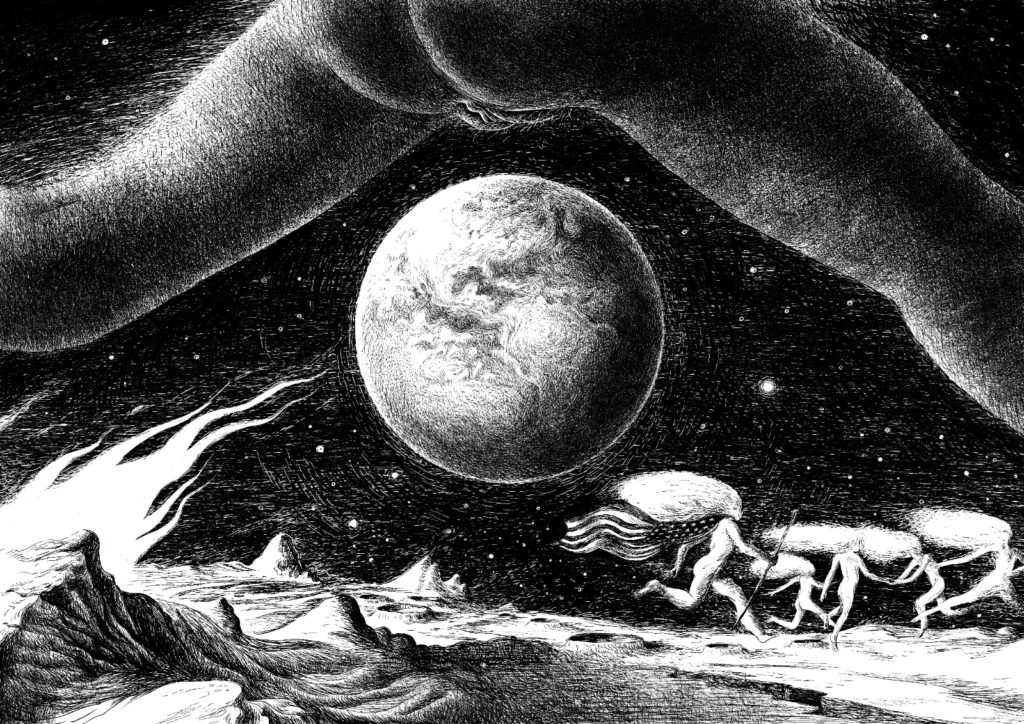
Let’s start with a headline from your personal web page. Underneath your name (super cool font) it says “When I drew this, I was thinking of you.’’ Assuming that thinking and inspiration are an artistic couple, how does that art creation process work for you? Who are the “you’’s in that sentence from your perspective?
Sometimes, when I can’t sleep, I’ll text myself. Nice things, passionate things, considerate questions, promises of money, insults, threats, demands for money, hearts and stars. And there’s a part of me that, even when I see the same eggplant on the right and the left sides of my phone, believes the message I’m receiving comes from a stranger. The perfect stranger, who is someone who knows me very well, speaks to me exactly when I need conversation and says exactly what I need them to say. Being able to draw is like having someone you can depend on. It’s the safest way to be in love.
“The reaction to George Floyd’s murder is something I’m ashamed to believe would not have been as sustained or transformative outside of the context of the pandemic.”
Everyone experienced 2020 in their cribs and hinterlands with all bunch of idiosyncratic anecdotes. Did this year alter your imagination in any significant way? Especially given that the American society went through a lot this past year: Covid-19, George Floyd protests, the elections, just to name a few. What is the most recent artwork you produced and enjoyed yourself in that regard? Can you share that with us?
I have the privilege of admitting that my life during the pandemic was not very much different from my life otherwise. I don’t get out much, my clients are always elsewhere, I moved to the desert at the end of 2019, where, after a short while I saw no one but Carol, Pauline, and Blanche, the women who work at my local post office. This year I dated my art school crush from a distance, got a very common kind of cancer, and felt lucky to be living. The reaction to George Floyd’s murder is something I’m ashamed to believe would not have been as sustained or transformative outside of the context of the pandemic. I believe that our national search for justice will continue, though belief is not nearly enough. There is the sense that here in America, whiteness doesn’t contain enough compassion for itself, much less any community it considers to be other. It’s easy to learn the language of mutual aid, accountability and decolonization, but these are not words for which I think the dominant culture has many models. Without truly functional internal examples, these ideas do nothing more than pin patronizing smiles on the faces of liberals. My own family does not believe in the power of family, community, or government. I have to ask myself how a culture without values could ever share its power or resources? How can we hope to improve, or even begin that idiomatic “conversation”? How do we “listen” when we can’t redefine our own narratives? We are none of us getting what we need, but some of us are getting what we deserve. My work in the coming year, in part, will be about that.
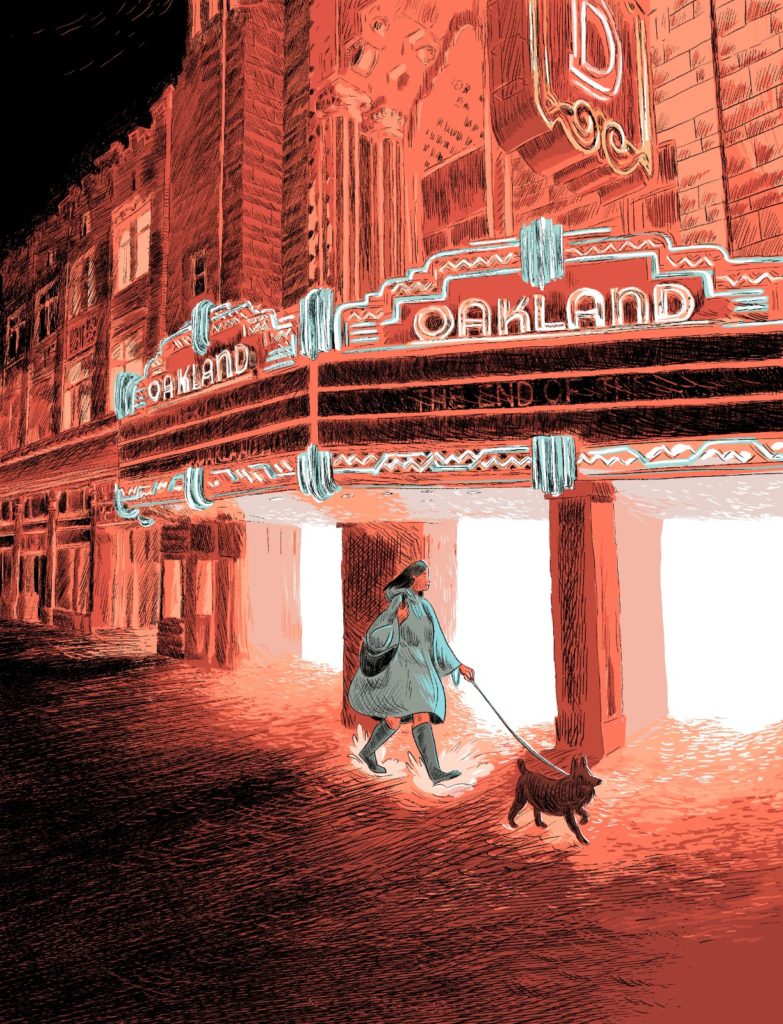
In one of your previous interviews for the Front YouTube channel, you mention that the contemporary tech landscape compensates its main orientation towards male interests by “featuring women’s face and stories”, and women should be involved in tech creation processes more. How would you comment on your own involvement in the intersection of art and tech scene? How did things change since you first started working in tech, with tech people (including your work withGoogle Tilt Brush andTwitter)?
I think I allowed myself to be used because I wanted money. My visibility in those spaces may have meant, to some, that they didn’t need to further include women or change their business practices to reflect the needs of women and other underrepresented populations. There are friendships I made in these contexts that I value, and doing this work meant I could live in comfort for the first time since I was twenty-two. Most of my work with Tiltbrush never saw the light of day because of a global pivot to AR within Google… And as far as my goals for representation, in retrospect, the things I was expressing in that interview were naive. I was a freelancer, nothing more. Every woman I met who truly worked at these corporations described a culture of disrespect, and they often tolerated sexual harassment so that they could be promoted. More equitable work environments will exist, are coalescing, but not because of anything I did or said in those contexts. The hiring of women and POC, the mission statements and sexual harassment training sessions, these are the consequence of an inevitable cultural movement.
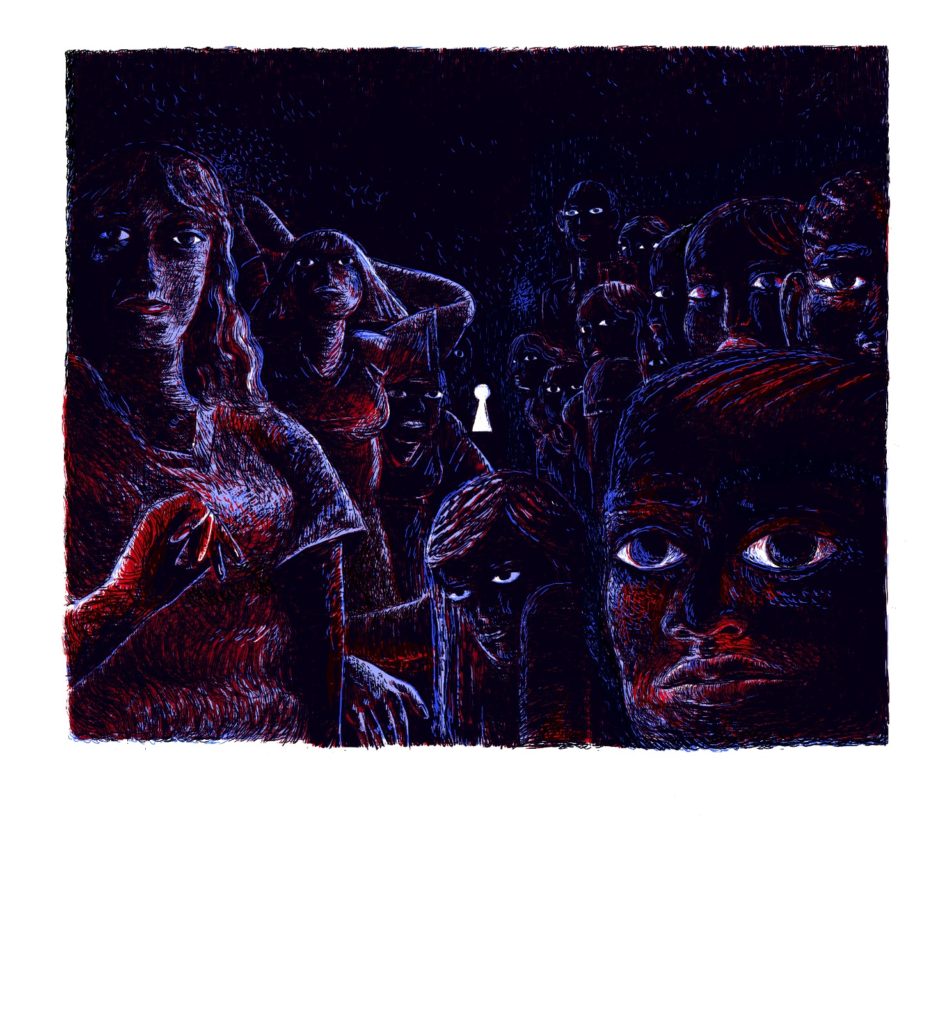
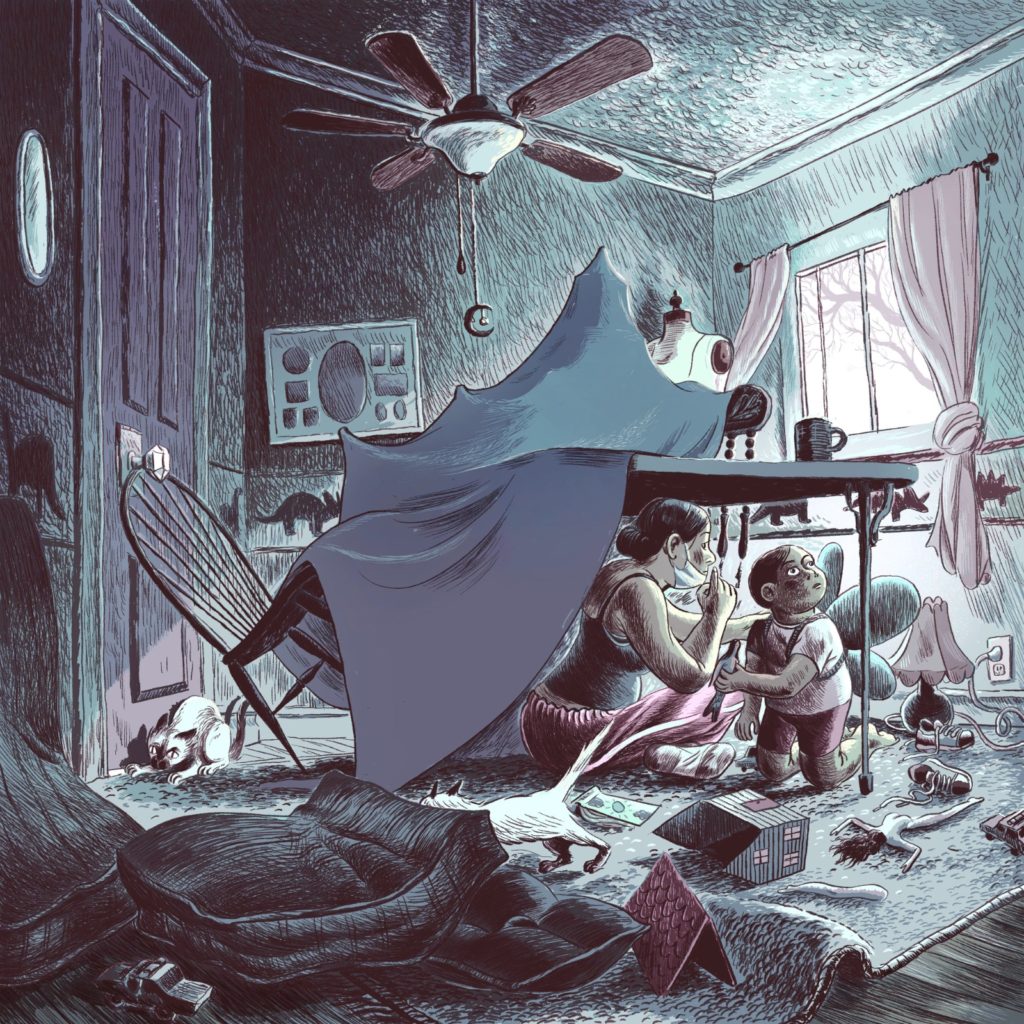
You do amazing work by combining your illustration skills with the Virtual Reality technology.12 seconds of gunfire,Sun Ladies,Dear Angelica. In the production process for Dear Angelica, your ideas and insistence pioneered the Quill technology that lets artists create in the VR environment. You’ve mentioned that you are interested in VR as an environment for trauma therapy as well. Can you expand on your possible second thoughts career-wise with getting involved in VR scene in the first place, and your main motivations to work in the field?
Thank you! Earlier, I wanted to work with researchers to recreate traumatic memories in VR, so people might re-experience their traumas in ways I hoped would give them more control, and help them to form different core beliefs. Unfortunately, my time in tech was not good for me, and set my career back some years. My work with Oculus was sexually leveraged. In 2019 my brother shot himself in a VR headset. That said, I love working with engineers. People who can code have the power to make work better than anything I’ll produce in my lifetime. At the moment, though, I only make VR work with friends, and people to whom I have previously existing obligations. It would take a lot to bring me back to this medium in a real way. I feel shame about my work in VR on a daily basis.
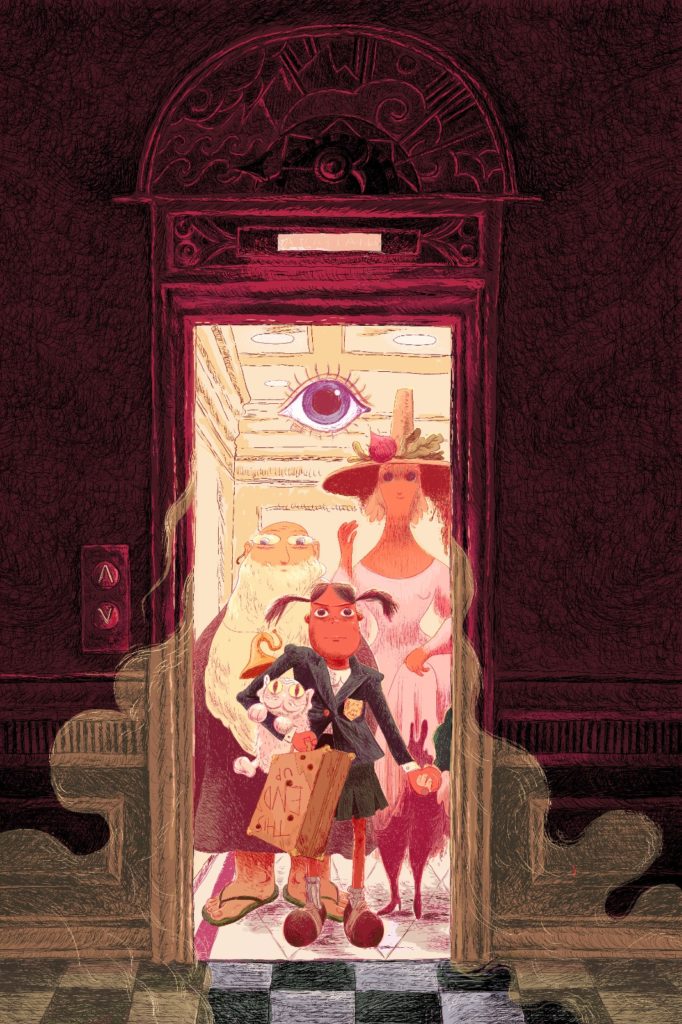
Thank you so much for sharing… Let’s talk about the comic books you write, draw and contribute to. We can take a peak at them in your website. Were you always a comic books and graphic novel person since the early days of your life? How did your engagement change with them once you started creating your own stuff rather than just reading others? Any all time favorites?
Reading Dan Clowes changed my life. He and Chris Ware were the first people who made me want to make comics. And I always wanted to do comics, always wanted to write fiction, but it was a secret. In school, I had the opportunity to take David Mazzucchielli’s class, but I couldn’t get through it without crying, turning red to my toenails or throwing up. I was so afraid, happy and overwhelmed. Things went on like that for about fifteen years. I had no confidence for what I wanted, and, I thought, no time. My time in VR meant that I stopped making comics—I thought VR could be the next medium for comics. Honestly, I still do. That coincided with the discovery that one of my long-time collaborators was a serial rapist. So I no longer want co-writer. Now I’m getting back into comics again, slowly. I’m reading older work, like Little Lulu, Mopsy, Archie, Girls’ Love Stories, Moronica, Lil’ Abner… Old newspaper work and DC romances and serial stuff. I’ve become very nostalgic for a culture that isn’t mine. I want to read what my parents and grandparents were reading. Also, there’s something about imagining this work being produced on a deadline, about it being imperfect and still publishable, that’s comforting to me. Comic studios are not like what they were, but there’s something about the workaday carelessness of these comics that I really respond to. Even if they are racist and sexist. They teach me things I couldn’t learn anywhere else.
“I don’t feel alone in wanting to explore these themes. Most of my friends have experienced sexual violence, and they work to live lives undefined by trauma and resentment. I think that’s something we can all relate to?”
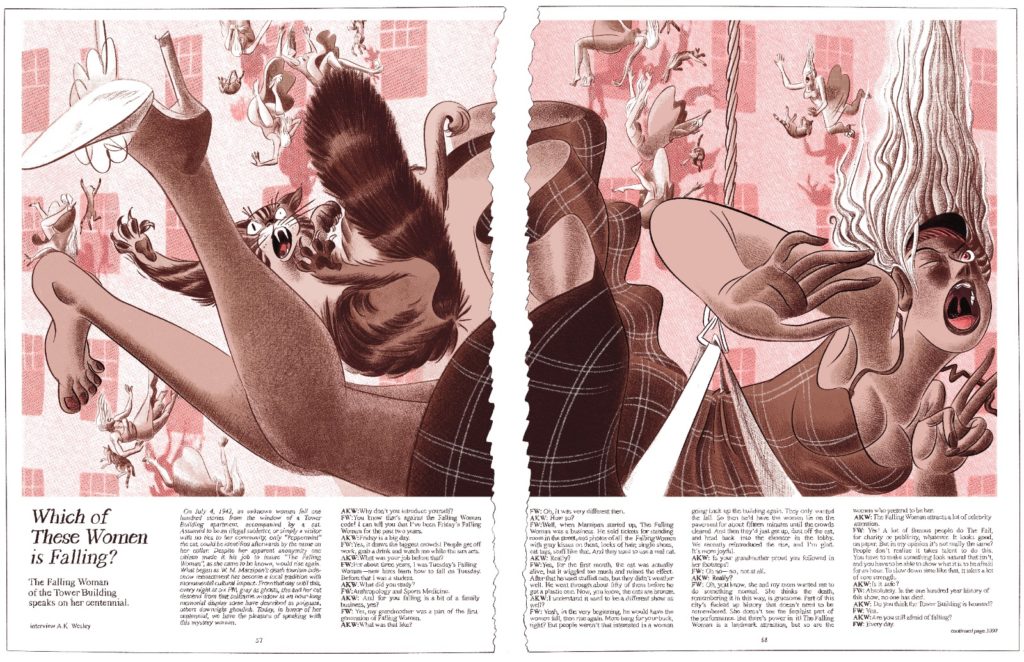
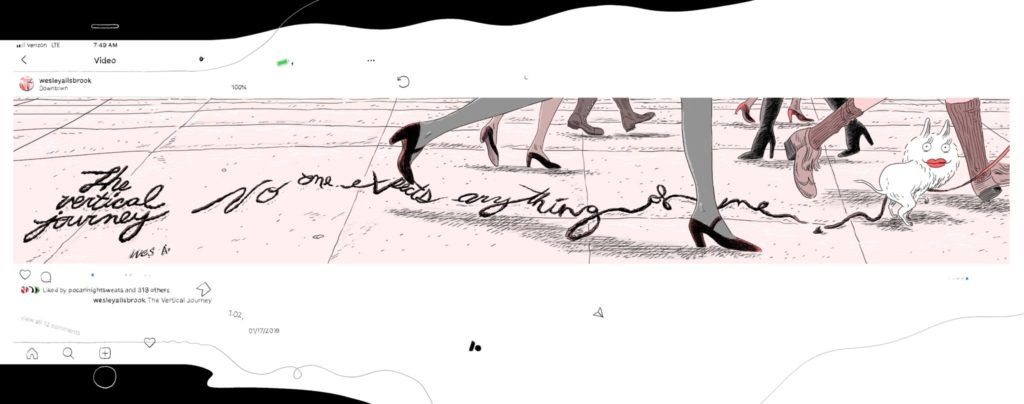
In many of your comic stories, one notices some sort of struggle and physical encounter happening between characters. A woman walking up the stairs of a tall building with her suitcase, another person climbing up of a hill, film noir style murders being committed due to some previous conflict and so on. The drawings are so visceral. How does your personal politics feed into your artwork in that sense? Do you feel like you are part of a larger community of artists who share similar politics?
Again, thank you! In my work, generally, I’m interested in finding metaphors for my personal experiences, or for the way I experience my friends’ personal narratives. I want to write about sex, the process of healing my relationships with heterosexual men, my family narratives, CSA, coming to terms with the violence of every-day life, gender and white guilt. I don’t feel alone in wanting to explore these themes. Most of my friends have experienced sexual violence, and they work to live lives undefined by trauma and resentment. I think that’s something we can all relate to?
Absolutely… You are a freelance artist. And the breadth of the color strokes and themes you bring into being in your artistic work show that you make use of that freedom as much as you can. Still, can you tell us more about that professional lifestyle? It might be a struggle for some, not only in the US or Turkey but all around the world. What have been the pros and cons of not being employed by a steady workplace?
This is the first year I will have health insurance since… well, a long time. I had it briefly in 2014, but I was homeless and couldn’t afford it, and my payments lapsed. This year I can afford insurance because I’ve made an effort to reduce the cost of my rent. Plus I’m finally not-depressed enough to care for myself. I haven’t had a physical in more than fifteen years, and I haven’t been to the dentist in five. I do all my gynecological exams at Planned Parenthood. Many freelancers were disappointed during the most recent election cycle when it was decided that contractors of corporations based in California would not receive the rights and protections of employees (Assembly Bill 5). Freelance illustrators can often experience long periods of joblessness and instability, though, of course, I can’t really compare myself to a Lyft driver. Our labor is different, but we all still need income, health insurance, sick days, human resources, etc. Drawing for a living is a privilege. Lately, though, I’d like to move on from Illustration, or find a way to work where I have a different kind of relationship with my client? My happiest moments at work come when I’m drawing for someone who’s known me for years. It’s unsatisfying to me that in my current work I can’t communicate with authors or editors, make selfmotivated work. I wish that freelancers could make their work-lives more transparent to the companies that employ them, and that these companies might do the same in return. I wish that we could sign contracts that guaranteed us a certain number of jobs a year. I know my dissatisfaction can breed ingratitude, which makes the work suffer. It can be hard to remain grateful, to maintain a sense of personal value in the face of work for hire contracts. I know I’m only able to say these things because I’ve been doing this job for thirteen years.
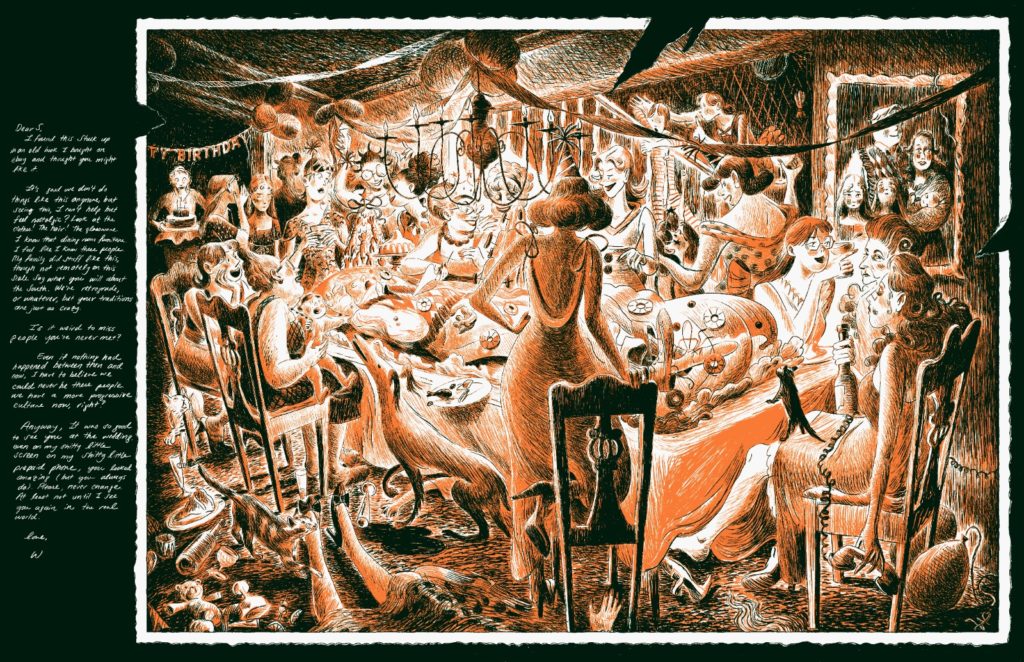
One last question about a specific collaboration you were part of.McSweeney’s 58: 2040 AD is a speculative fiction project that is concerned with the ongoing climate crisis that spans all continents and living beings. What was the story you submitted to this collaborative project? We could see some of your drawings onyour Instagram page but it would be lovely to hear more about it from your own words. What does it mean for you?
I wasn’t able to submit writing, only draw the images for this issue. For me, it’s a huge opportunity to have my work featured next to fiction. There’s more freedom in that, typically, and art directors tolerate more creative interaction with the material. Ironically, I was not able to read this work before this issue was published. I’ve worked with McSweeneys for more than ten years, and, though the magazine’s changed, the experience is nostalgic. Their AD is very kind and talented.
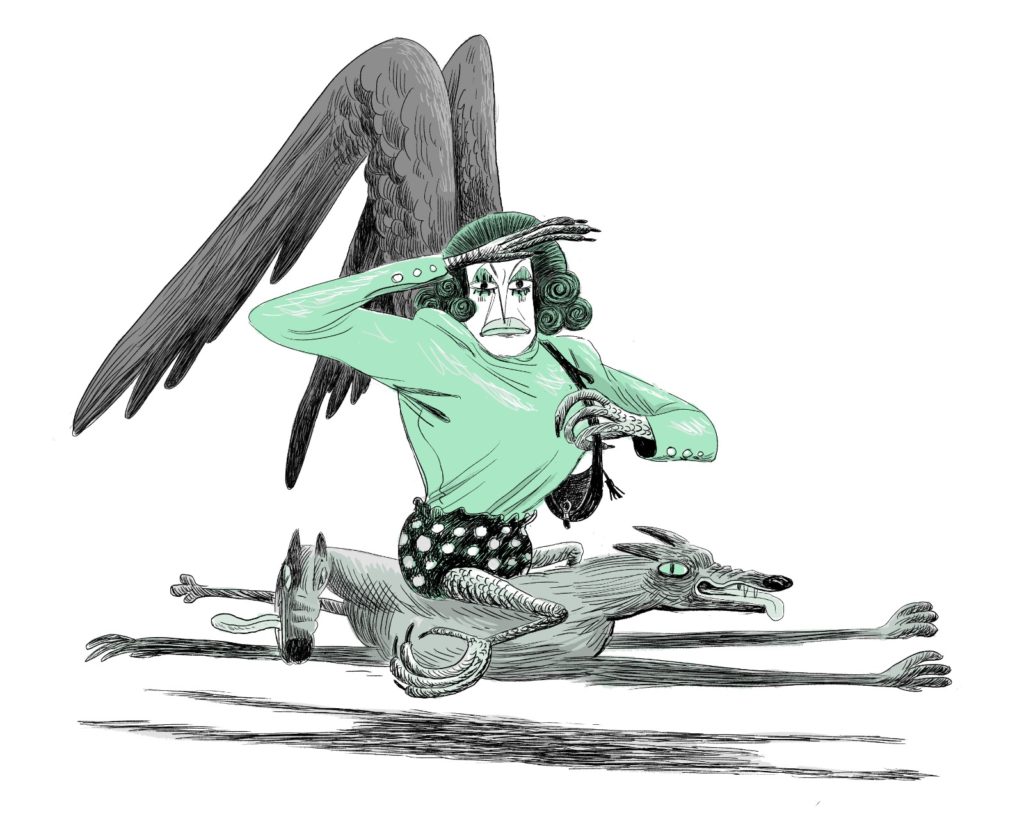
Interview by Mehmet Ekinci
